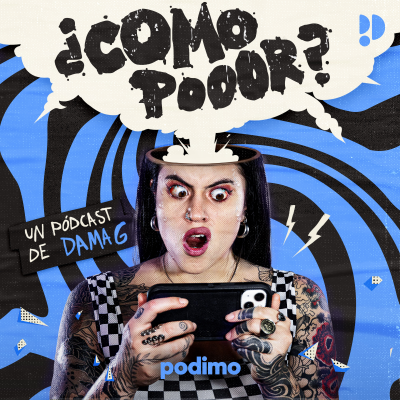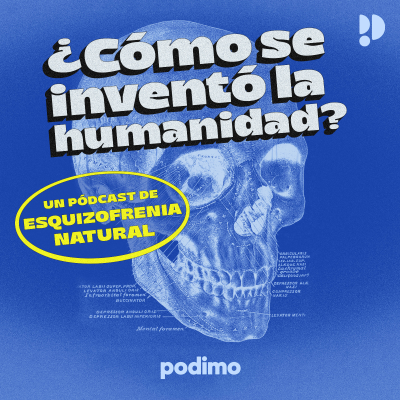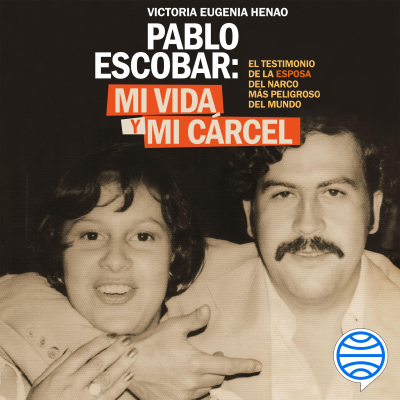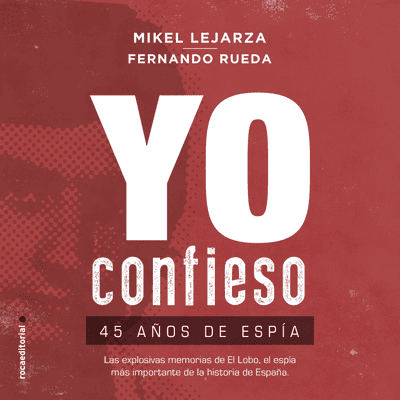
Empieza 7 días de prueba
$99.00 / mes después de la prueba.Cancela cuando quieras.
Todos los episodios
102 episodiosImpermanence One of the ways that I define toxic shame, is that it is an interpretation of the feeling of shame (shame affect) as something global, permanent, and externally referenced. In this episode, I want to explore the permanent aspect of this interpretation because I’ve been experiencing it a lot lately in my own life. I notice this sense of permanence shows up in (at least) 3 key ways. The first is that toxic shame is often interpreted as “there’s something wrong with me”, and the permanent element convinces us that this supposed flaw is permanent. There’s something wrong with me… and there’s nothing I can do to fix it! This is either the way I am and always have been, or I’ve been broken or sullied or contaminated in some way that cannot be undone, healed, or accepted. The second aspect shows up in connection with the way that shame is usually triggered by an interpersonal rupture, some kind of perceived disconnection with an important person or group. In this instance, toxic shame is the belief that the relationship is now permanently broken. This form of shame denies the possibility of repair [https://discomfortable.net/rupture/], reconnection, amends, or change. The third aspect is about the feeling of shame itself. It is the belief that this feeling is permanent. That the pain of shame will be more or less unavoidable in the future. Toxic shame can convince you that this is your life now: suffering without end. And you can see how these 3 elements feed off of one another and build into a vicious shame triangle. Because I am “permanently flawed”, I will be rejected by everyone I love, permanently. And because I’m going to be alone forever, I’m going to be trapped in this feeling of shame for the rest of my life. You can imagine just how disempowering such a belief would be. If you’re going to be trapped in permanent suffering for the rest of your life, what’s the point in even living? In order to confront this painful pattern, we need to spot it! If we can notice that we aren’t in shame all the time—that we do in fact have moments of pride, connection, and joy—we can begin to counter this toxic interpretation with hard evidence. As many wisdom traditions have been teaching for centuries, all feelings are temporary. Ironically, the more we expect to “cure” or rid ourselves of shame forever (a permanent solution), the more it feeds this toxic belief. That’s why I offer shame coaching [https://discomfortable.net/coaching/], free discussions, and group classes [https://discomfortable.net/events/], so that we can talk about our shame and reinterpret it in healthier ways.
Rupture Lately, I’ve noticed a particularly insidious message hidden in my shame. Not only do I tend to go into shame when I make a mistake (as I’m sure most people do), but my inner critic adds insult to injury by convincing me that on some level, I knew I was going to make that mistake! And the fact that I did it anyway, even though I supposedly knew it wouldn’t work (or knew it would be a disaster, knew it would hurt people, etc) just proves how “selfish, irresponsible, untrustworthy, deceitful, and evil” I supposedly am. This fuels a particularly painful and demotivating kind of shame spiral. In this episode, I explore how this toxic phenomenon comes to be. Like most toxic forms of shame, these patterns usually form in early childhood. As children, we are helpless little sponges that automatically soak up everything we are exposed to, including language, cultural norms, emotional patterns, etc. And because we are social beings, we are born with the expectation and need to connect with the adults in power over us. This connection comes in the form of their warm attention, emotional attunement, care, support, and love. Whenever that connection is broken, we naturally go into a shame reaction. Because childhood is inherently an egocentric phase of development, as children we implicitly interpret these painful interpersonal ruptures as “my fault”. But ruptures are unavoidable, and what’s more, they are arguably useful! When the caregiver notices the rupture and repairs it, taking full responsibility for the break in connection and reestablishing warm attunement with the child, it can serve as a valuable and necessary learning experience that actually deepens and strengthens the bond between them. But if the adult doesn’t actively repair the connection, then the child will be forced to attempt to make the repair themselves in order to reestablish a sense of safety. In this scenario, not only will the child continue to blame itself for the rupture, but the implicit message to the child will be, “You need to change in order to be fully loved and accepted by the important people in your life (who you need to survive)”. If this happens often enough, the child’s brain and nervous system will wire themselves around the belief that there’s something wrong with the child, that there’s something about it that hurts people and pushes them away. We carry these disempowering beliefs into adulthood and they colour the way we see ourselves and the world. For example, my toxic shame is always telling me that I’m going to hurt people somehow and that I’m likely to fail at whatever I do. So no matter what I try, even with the best planning and intentions, if I make any mistakes, if anything goes wrong (even out of my control), or if anyone is inadvertently impacted in a negative way, my shame can always say, “See, I told you so!” And it gets even worse than that, because if my inner critic can convince me that I “knew” it was going to happen, then it can further shame me for being “reckless”, “irresponsible”, and “wantonly hurtful”. It’s an unfair and overwhelming shame spiral that makes you never want to try, take a risk, or put yourself out there ever again… But if we can spot the pattern, we can break the cycle! To that end, I have put together a 4-week online cohort course [https://discomfortable.net/events/#GDWS] starting on August 8th that aims to illuminate how these patterns form and manifest in our lives so that we can notice them, challenge them, and begin to heal them.
Viral Memes In episode 101, I put forth a provocative analogy for toxic shame that I think captures the slippery and insidious way that it spreads from one generation to another. I see toxic shame as operating like an unconscious viral meme. The thought experiment goes like this: imagine that as a child, you were hypnotized by someone you loved and trusted, or someone who had power and influence over you. While you were hypnotized, this person implanted an idea in your head (kind of like the film Inception). And that idea was that there is something deeply wrong with you! They may not even have specified what was wrong with you, they just left you with this strong belief that you were flawed. And then they took it even further than that. They hypnotized you to hypnotize other people too. Whenever something reminds you of this belief that there’s something wrong with you, you were instructed to try to hypnotize the people around you, the people you love, the people you have power over, in order to implant the exact same idea in their heads as well! This is how the memetic virus spreads. Last but not least, this person hypnotized you to forget that you’d ever been hypnotized at all. And to forget whenever you hypnotize anyone else (just as they themselves have been hypnotized to forget that they’ve hypnotized you). And so from that moment onward, you not only had this idea stuck in your head that you were flawed, but since the hypnosis itself was forgotten by all the parties involved, you actually believed that it was your genuine opinion that you were flawed, that you had decided to believe that based entirely on your own logic and volition. And whenever that belief was triggered, you unconsciously spread this hypnotic virus to anyone around you that you had power over. And they did the same, and on and on it went. [https://discomfortable.net/wp-content/uploads/2023/07/anigif_sub-buzz-15796-1534362901-1.gif] While this isn’t a perfect analogy, I think it’s a pretty close approximation of how toxic shame functions. Toxic shame begins in childhood whenever our caregivers, or the adults in power over us, do something to break the connection between us and them, usually triggered by their own shame. Because we are children at the time, we are in an egocentric stage of development, which means that we will naturally fault ourselves for these ruptures, even though as children we aren’t morally, legally, or mentally responsible. So we essentially have no choice but to blame ourselves for the emotional reactions of our caregivers, which wires a belief into our heads that there must be something wrong with us (because we can’t fathom that there might be something wrong with these adults who we depend on for our very survival). Unless these ruptures are noticed and repaired by our caregivers, this wiring will crystalize and carry with us into adulthood. From there, we will unwittingly recreate this exact same pattern of disconnection whenever our shame gets triggered, thus spreading our toxic shame onto our own children and anyone else who happens to be under our power. In this way, toxic shame is an unconscious viral meme that gets passed from generation to generation. But there’s hope! If we can spot the pattern, we can break the cycle. To that end, I have put together a 4-week online cohort course [https://discomfortable.net/events/] starting in August that aims to illuminate how this pattern lives in all of us so that we can notice it, own it, and begin to heal it.
Authenticity Episode 99 is a weird and special exploration of authenticity that upended my entire notion of what this podcast is and what I want it to be! Authenticity is a concept and a practice that I really value and something that I consider to be one of the opposites of toxic shame. Shame often tries to tell us to change and hide our truth, whereas authenticity is all about embracing and sharing that truth. I’ve already written about authenticity at length in my book [https://discomfortable.net/book/], so I’m just going to quote myself here: > To me, authenticity is about cultivating a congruency between our internal state and our external presentation, usually relating to our emotions, our physical sensations, and our thoughts. This is ephemeral material that we don’t usually need to make public in order to be strictly honest. I can truthfully communicate all kinds of information without revealing that I happen to be furious. Being authentic is being honest about what is going on inside of me by voicing or embodying the unseen feelings, drives, and thoughts that I don’t need to share. It’s allowing my emotions to shine through, and expressing my self-awareness to others. Ironically, as soon as I started recording this episode, the theme of authenticity forced me to confront the ways in which the podcast and the persona I take on while hosting it don’t embrace authenticity as deeply as they could. It was challenging and unpleasant to discover—and admit—that the lighthearted, half-laughing speaking style that I often employ on the podcast is actually somewhat of a performance! My goal has always been to take a playful stance on shame and other difficult emotions, which I hoped would make the podcast and the subject matter more accessible, but the tradeoff, I now realize, is that it’s not the most authentic approach. This episode operates almost as a continuation of the previous episode on Circling [https://discomfortable.net/circling/], and in many ways actually demonstrates the essence of Circling better than the Circling episode does! I tried my best to actually slow down, notice, feel, and share what was alive and true in my body as I was recording, while also trying to explain what authenticity means to me intellectually—so you get a taste of embodied authenticity in practice and in theory. I found connecting with more authenticity in the recording of the podcast to be a bit of a breakthrough for me and my process, so I’m excited to see how this new approach shapes the podcast moving forward!
Circling In Episode 98, I describe one of my favourite practices, Circling. Circling is an interpersonal relational modality that I’ve been playing with and training in for a number of years now, and it has been one of the most powerful tools I’ve found for improving my self-awareness and authenticity. Circling is often described as a social form of mindfulness. Like meditation, Circling helps me to notice my emotions in the present moment, even aversive ones like shame. But unlike meditation, Circling invites me to then immediately share what those emotions are with others, which is a useful vulnerability, authenticity, and honesty practice. And Circling also invites others to reveal what impact my sharing has on them, which is often surprising and insightful, and part of what makes Circling a powerful tool for meeting my needs for connection. Circling is also related to another modality I really enjoy called Authentic Relating, which I did an episode [https://discomfortable.net/authentic-relating/] about a few years ago. So what is Circling exactly? In this episode, I attempt to answer that question to the best of my inexpert ability. There are several schools of Circling each with their own guidelines, so in this explanation, I’ve synthesized some of my favourite Circling principles to give you an overview of the practice. Keep in mind that these are just my understandings and preferences for Circling, so this description is in no way definitive or endorsed by any of the official Circling schools. Here are some of the loose guidelines I like to include when Circling: * Welcoming everything * Staying in the present moment * Sharing impact * Owning our experiences * Checking our assumptions * Noticing our reactions instead of just enacting them * Staying at the level of sensation * Staying curious * Weaving shared reality * Committing to connection The main action of Circling involves a small group of people sharing what’s alive for them in the present moment of being together. While sitting in a group of people, I might notice an emotion or sensation arising in my body. Circling invites me to share whatever that sensation is using ownership language, which is taking full responsibility for whatever is happening in me. And as I share, there is likely to be a ripple of impact on each person listening, and in Circling, any or all of them are welcome to share whatever the impact is on them, also using ownership language. And so on, back and forth, in a kind of, well, circle. People are also encouraged to ask each other curious questions in order to fully understand what it’s like for each person to be in the circle. For me, perhaps the most revolutionary part of Circling is that it’s very rare for me to have conversations that revolve around the present moment at all. In my culture, it’s much more likely that we’ll be talking about the past (“You won’t believe what happened to me yesterday…”) or talking in theory space (“The problem with Neoliberalism is…”). I quickly discovered that talking about what I’m feeling, in the moment that I’m feeling it, is quite vulnerable because I can’t actually control or predict which sensations will emerge from my body at any given time. Learning to notice, accept, feel, and express those feelings, without being controlled by them, has been a game changer. If you want to try Circling there may be groups in your area or you can find Circles online. If you want to learn more about Circling, try it, or do a training, here are some organizations I’d recommend checking out: Circling Institute [https://circlinginstitute.com] (founder Guy Sengstock [https://circlinginstitute.com/about/] is often credited as one of the main creators of Circling), Circling Europe [https://www.circlingeurope.com] (I’m currently taking and enjoying their SAS training), Circle Anywhere [https://www.circleanywhere.com], The Connection Insitute [https://theconnectioninstitute.net] (I took and enjoyed a number of their trainings, especially UnTriggered [https://theconnectioninstitute.net/untriggered/]).
Empieza 7 días de prueba
$99.00 / mes después de la prueba.Cancela cuando quieras.
Podcasts exclusivos
Sin anuncios
Podcast gratuitos
Audiolibros
20 horas / mes























